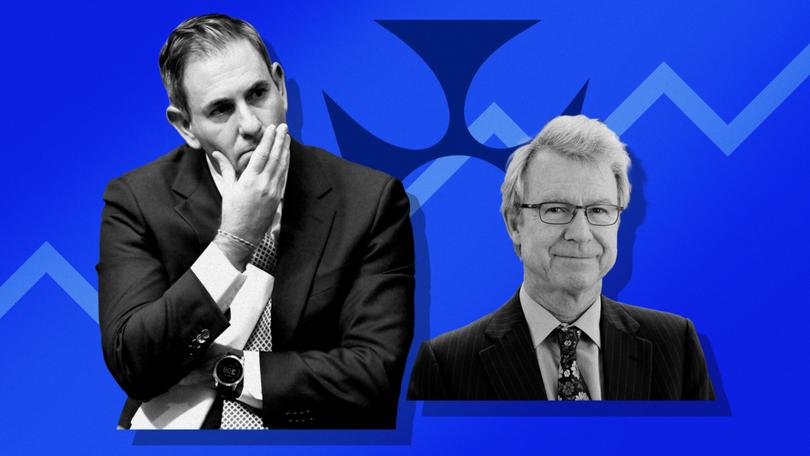The ABS’ latest inflation figures are the most significant in years, economists warn

All eyes will be on the Australian Bureau of Statistics website on Wednesday when the anxiously awaited quarterly inflation figures are published.
Considered by some economists as one of the most important data releases in more than two years, and as a report card of the Federal Government’s economic policies, the figures are set to have a huge bearing on whether the Reserve Bank holds its nerve, or hikes the cash rate when it meets next week.
If the central bank opts to hike rates, that would send shockwaves through under-pressure households and businesses, and could likely influence when Australians head to the next Federal Election, due before May.
Sign up to The Nightly's newsletters.
Get the first look at the digital newspaper, curated daily stories and breaking headlines delivered to your inbox.
By continuing you agree to our Terms and Privacy Policy.Eager to be seen as responsible economic managers, Prime Minister Anthony Albanese and Treasurer Jim Chalmers sought to get on the front foot today, hoping to temper expectations and argue their back-to-back budget surpluses and “measured” cost of living relief had in fact helped ease inflation, which peaked at 7.8 per cent in the December 2022 quarter.
Market economists expect the annual headline CPI to have increased 3.8 per cent in the year to the June quarter, in line with the RBA’s prediction from back in May.
But the real focus will be on what is happening with underlying “trimmed mean” inflation. That figure, which has the more volatile priced items removed, is the more accurate gauge.
Broad expectations are for that figure to have increased by four per cent over the last year. AMP chief economist Shane Oliver said if that were to come in any higher, the potential outcomes “get more scary”.
“The Reserve Bank ... was expecting that underlying measure would only rise to 3.8 per cent (this quarter). So if it comes in at four per cent, that’s higher than the RBA was looking for,” he said
“If that figure is 4.1 or 4.2 per cent, the RBA might then say ‘this is too high for comfort’, and will start to worry that people aren’t believing them anymore about getting inflation down.”
In releasing the latest Deloitte Access Economics business outlook report last week, Stephen Smith said Wednesday’s inflation data would pave two clear, alternative pathways for the Reserve Bank.
But, he argued further monetary tightening “cannot be justified, and would just pull the rug out from under a cautious economic recovery”, adding that keeping rates steady would keep the narrative of a strengthening economy intact.
“(Lifting interest rates would) further crush household and business confidence, and wipe out the benefits of tax cuts and real wage gains in the second half of 2024,” he said.
His co-author Cathryn Lee said interest rates “neither will, nor should, increase from their current level”.
As of Monday, the markets priced a 22 per cent chance of the RBA hiking its rate to 4.6 per cent.
Dr Oliver told The Nightly the RBA would have to seriously weigh up whether there was any more room for monetary tightening, pointing to the “clear evidence” that the economy was slowing down.
He suggested the RBA would also be paying close attention to the latest retail trade data, due to be released on Wednesday, as well as Tuesday’s building approvals figures, which revealed a 6.5 per cent decline in June.
“There’s quite a lot of evidence out there that the economy is struggling. I think the Reserve Bank would probably conclude well, okay, these (inflation) numbers are a little bit higher, but we know the economy is slowing down,” he said.
“We know that normally results in lower inflation. We also know the full effect of the interest rate hikes is yet to fully show up, and we also know that other countries around the world saw higher inflation. It could just be part of the bumpy road, and they should therefore sit tight.
“But if you get a 4.1 per cent or 4.2 per cent (trimmed mean inflation rate)... that’s where the risk kicks in, and the board may move again.”
If that happens, pressure will be on the Labor government. While Mr Chalmers was reluctant to want to pre-empt what Wednesday might bring, he sought to allay concerns.
“We know inflation does not always moderate in a straight line ... we’ll wait and see what those numbers say, but we have anticipated for some time that the inflation challenge in our economy is persistent,” he said.
“The Government is doing its bit, turning big Liberal defects into big Labor surpluses. The Reserve Bank governor has said that is helping in the fight against inflation... We are playing our part and doing our bit.”
Elsewhere, Mr Albanese said the Government was working to take pressure off inflation, and downplayed suggestions the revamped stage three tax cuts now hitting people’s paychecks risked exacerbating the figure.
“We’re dealing with cost of living pressures... What my government has done (is) instead of the massive Liberal deficits, we have had consecutive Labor surpluses. We have done that whilst achieving cost of living support,” he said.
“Our tax cuts... are helping Australians... (And) they’re not a splash into the economy, they occur over a period of time... So they’re good for the economy.”

